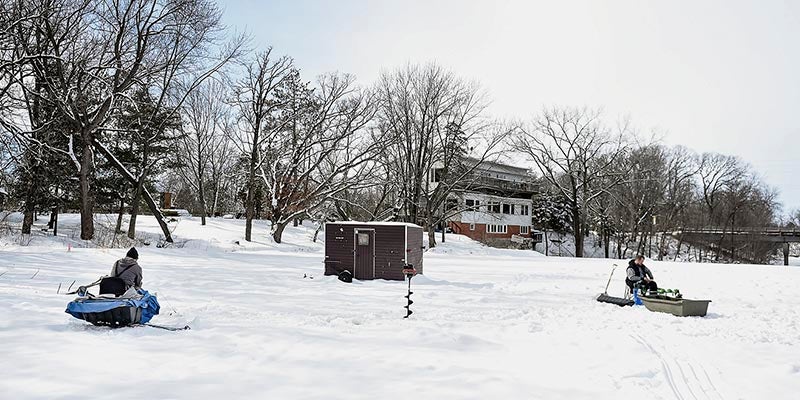EPA says ‘further actions’ needed to protect human health from nitrate in southeast Minnesota
Published 7:27 am Thursday, November 9, 2023
|
Getting your Trinity Audio player ready...
|
By Kirsti Marohn
A federal agency says state agencies need to take additional steps to protect drinking water in southeast Minnesota from nitrate contamination.
In April, environmental groups petitioned the U.S. Environmental Protection Agency, saying nitrate in the groundwater in southeast Minnesota’s karst region — largely from fertilizer and manure applied to crop land — poses an imminent danger to human health. They asked the EPA to use its emergency authority under the Safe Drinking Water Act to intervene.
Groups that signed on to the petition included the Minnesota Center for Environmental Advocacy, Minnesota Well Owners Organization, Clean Up the River Environment, the Land Stewardship Project and Minnesota Trout Unlimited.
In a Nov. 3 letter to state agencies, EPA Region 5 Administrator Debra Shore wrote that despite commitment to address nitrate contamination through state programs, there is an “evident need for further actions to safeguard public health.” The letter was addressed to commissioners of the state departments of health and agriculture, and the Minnesota Pollution Control Agency.
The EPA expects state agencies to develop a comprehensive work plan to test drinking water, and offer alternative water to affected residents as soon as possible, Shore wrote. She said Minnesota officials should provide immediate notice to any residents whose wells have nitrate levels at or above the safe level.
In addition to addressing immediate health concerns, Minnesota must also develop a long-term solution to reduce nitrate in drinking water supplies, Shore wrote.
“EPA expects Minnesota to hold sources of nitrate accountable using all available tools to reduce the amount of nitrate they release to ground water,” she wrote.
Shore said Minnesota should consider adopting more protective permits for wastewater and large animal feedlots, and stronger guidelines for applying manure and fertilizer to fields.
Leigh Currie, director of strategic litigation with the Minnesota Center for Environmental Advocacy, said the petitioners are pleased with the EPA’s response. She said Minnesota’s “patchwork quilt” of agencies that regulate water is part of the reason the groups sought federal intervention.
“We went to EPA to hopefully get a more holistic approach to the problem, and we were really pleased that they recognize the need for such an approach,” Currie said.
The EPA response didn’t include everything requested by the petitioners. Currie called it a “stiff warning,” but said the EPA stopped short of using its emergency authority.
“At this point, they’re looking to the state agencies to do more to address this crisis,” Currie said. “But they’re warning them essentially that if they don’t, they will step in and use their independent authority to make sure that happens.”
The EPA is requesting a response from the state within 30 days, including time frame for the work plan, and how the state will identify, contact, test drinking water and offer alternative water to all impacted residents in the region.
The agency’s involvement drew a sharp rebuke from GOP U.S. Rep. Brad Finstad, who represents southeast Minnesota. He criticized recent unannounced EPA inspections of farms in Winona and Olmsted counties.
“It is completely unacceptable that EPA is targeting Minnesota family farmers at the behest of environmental extremists,” Finstad stated in a news release.
State response
In a joint statement, the state agencies said they share the EPA’s commitment to protecting drinking water by addressing nitrate contamination, and pledged to work together to develop a plan.
Minnesota already is working on long-term strategies to reduce nitrate contamination through better fertilizer and manure practices, they stated.
“While progress has been made, more work is required by state agencies, local governments, and industry partners to reduce nitrate levels in our lakes, streams and groundwater to protect drinking water for all Minnesotans,” they stated.
Southeast Minnesota’s karst geography is especially vulnerable to nitrate contamination. Fractured bedrock and sinkholes allow water to flow quickly from the surface to the groundwater.
About 300,000 people in the eight-county karst region are on public drinking water supplies, while about 94,000 rely on private wells.
Based on past monitoring, an estimated 9,218 residents were or still are at risk of consuming water with nitrate levels higher than the safe health limit of 10 milligrams per liter, Shore wrote.
Some public drinking water supplies also have had to provide additional treatment or drill deeper wells due to high nitrate levels.
Nitrate is a form of nitrogen, a common component of commercial fertilizer and animal manure used on crop land.
Drinking water with high nitrate levels poses a health risk to humans, especially infants that can develop a sometimes-fatal condition called methemoglobinemia, or blue baby syndrome.
More recent research also has linked nitrate exposure to health effects for adults, including colorectal cancer, thyroid disease and neural tube defects.






